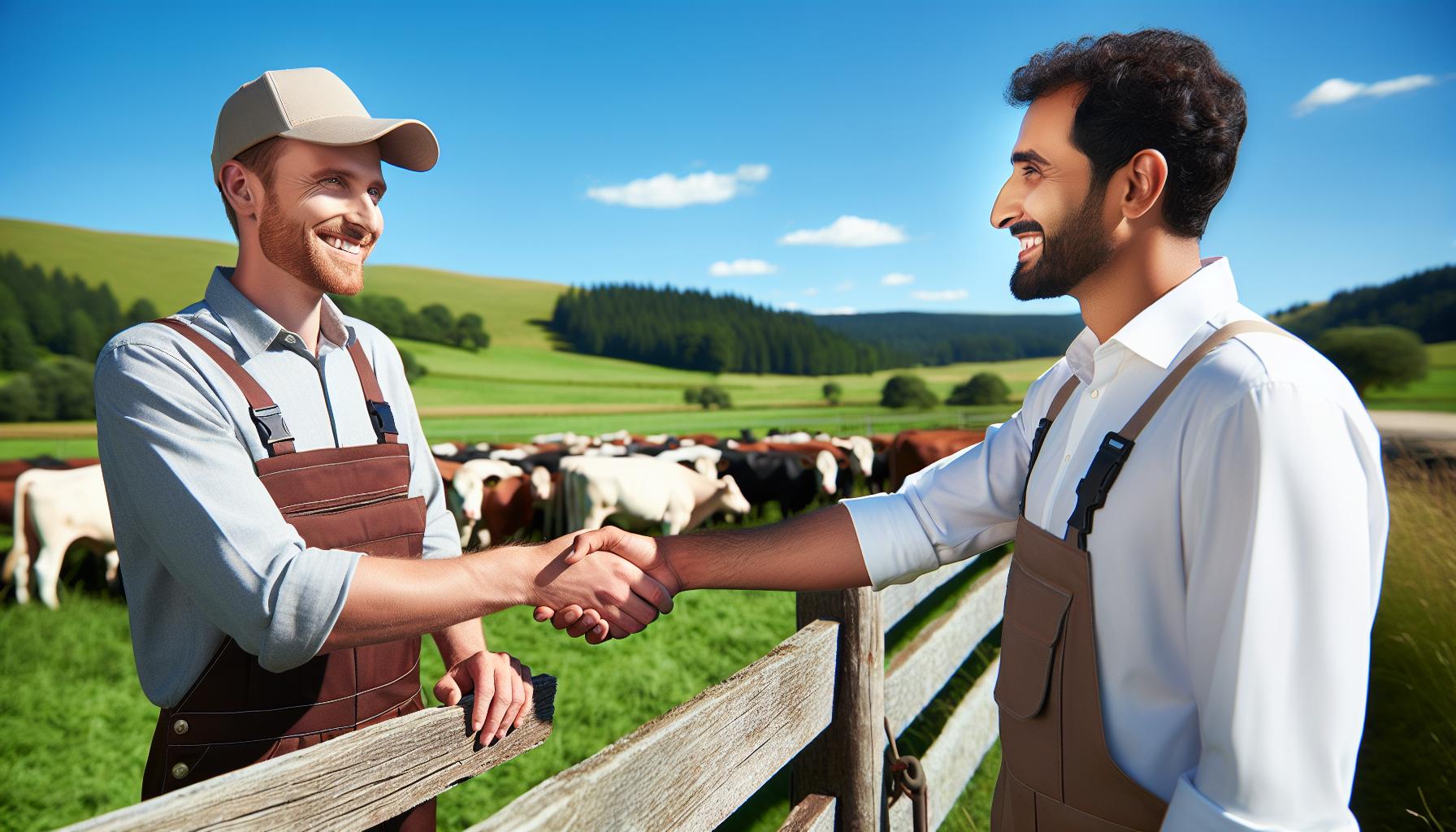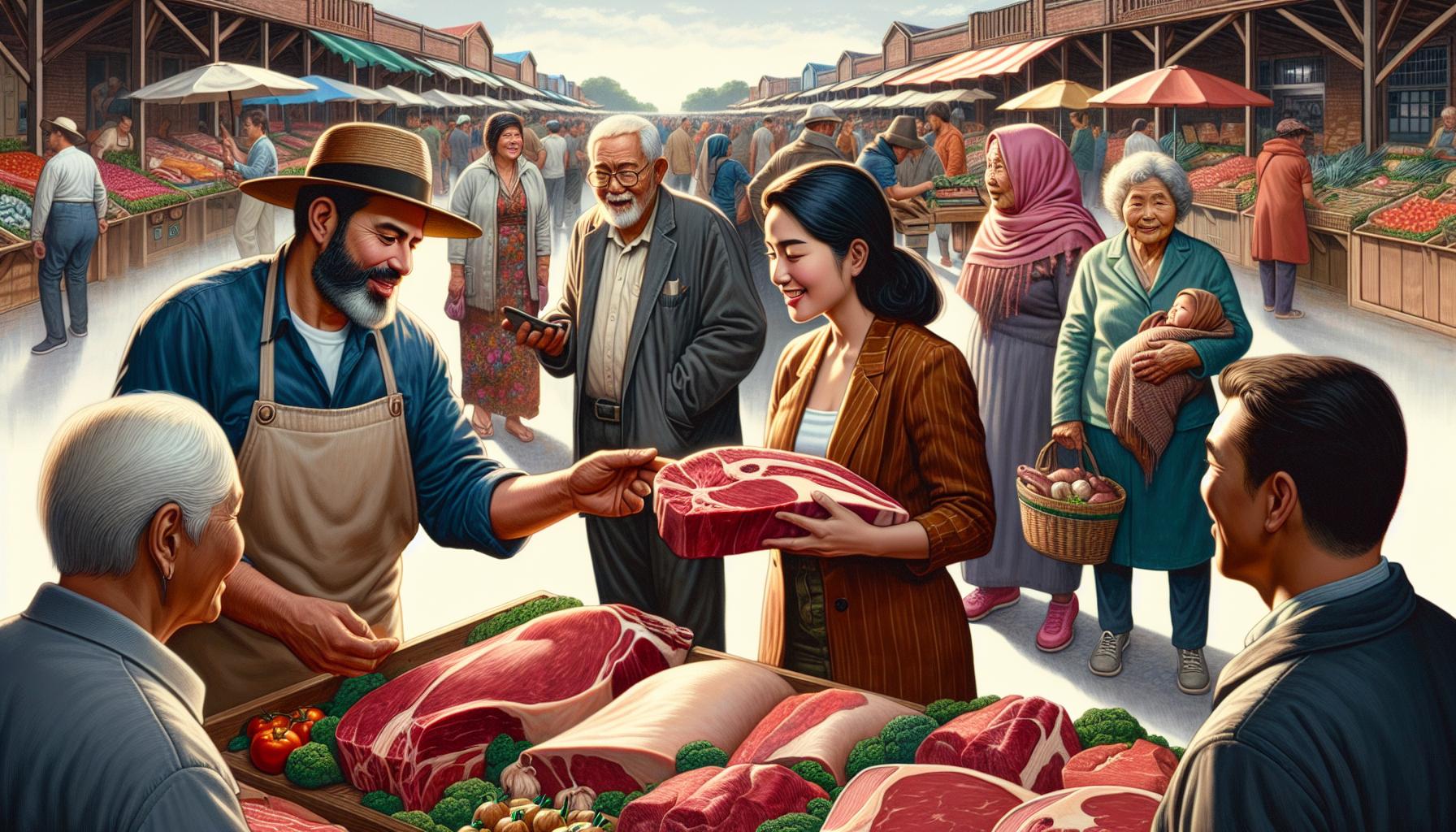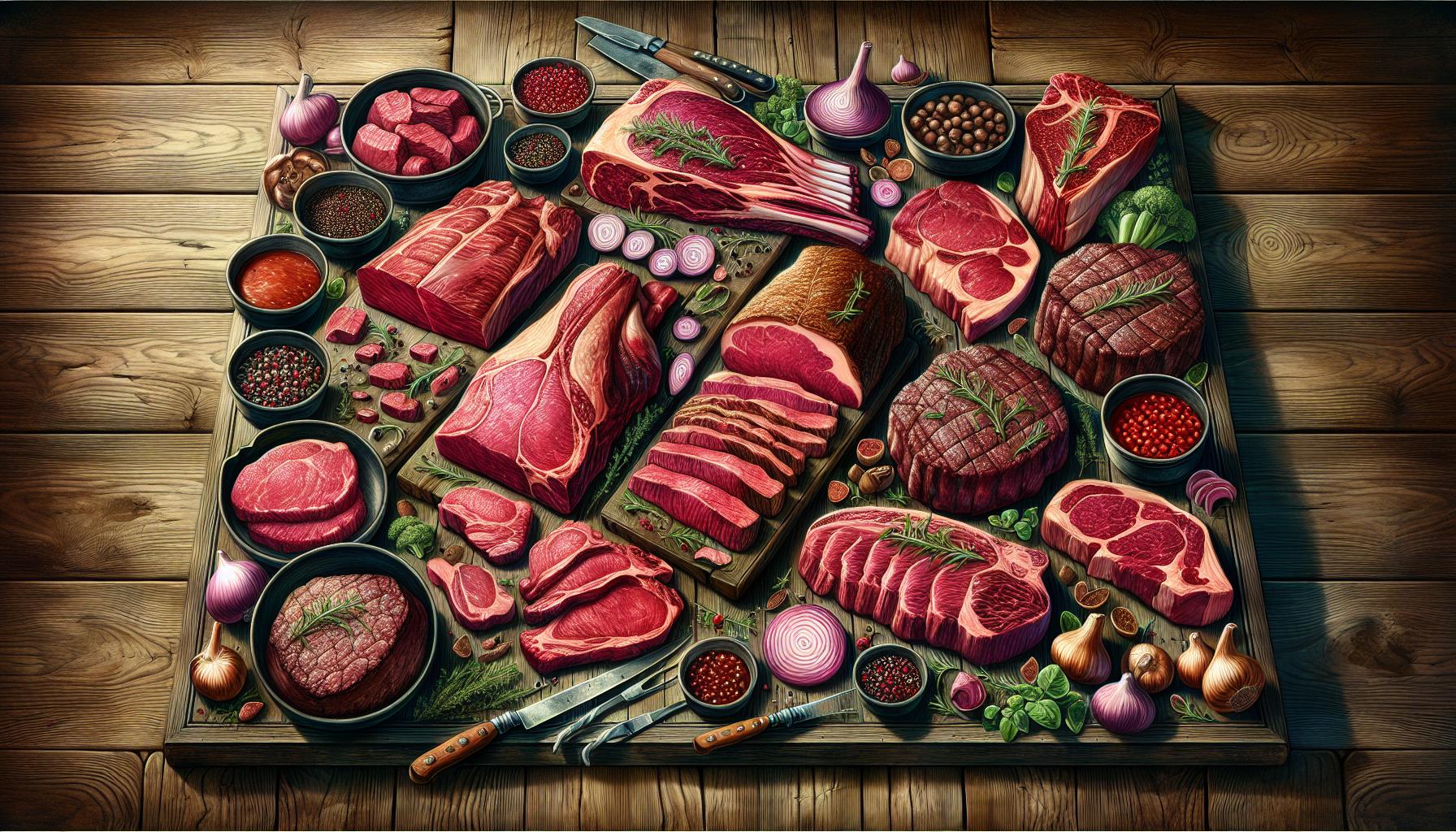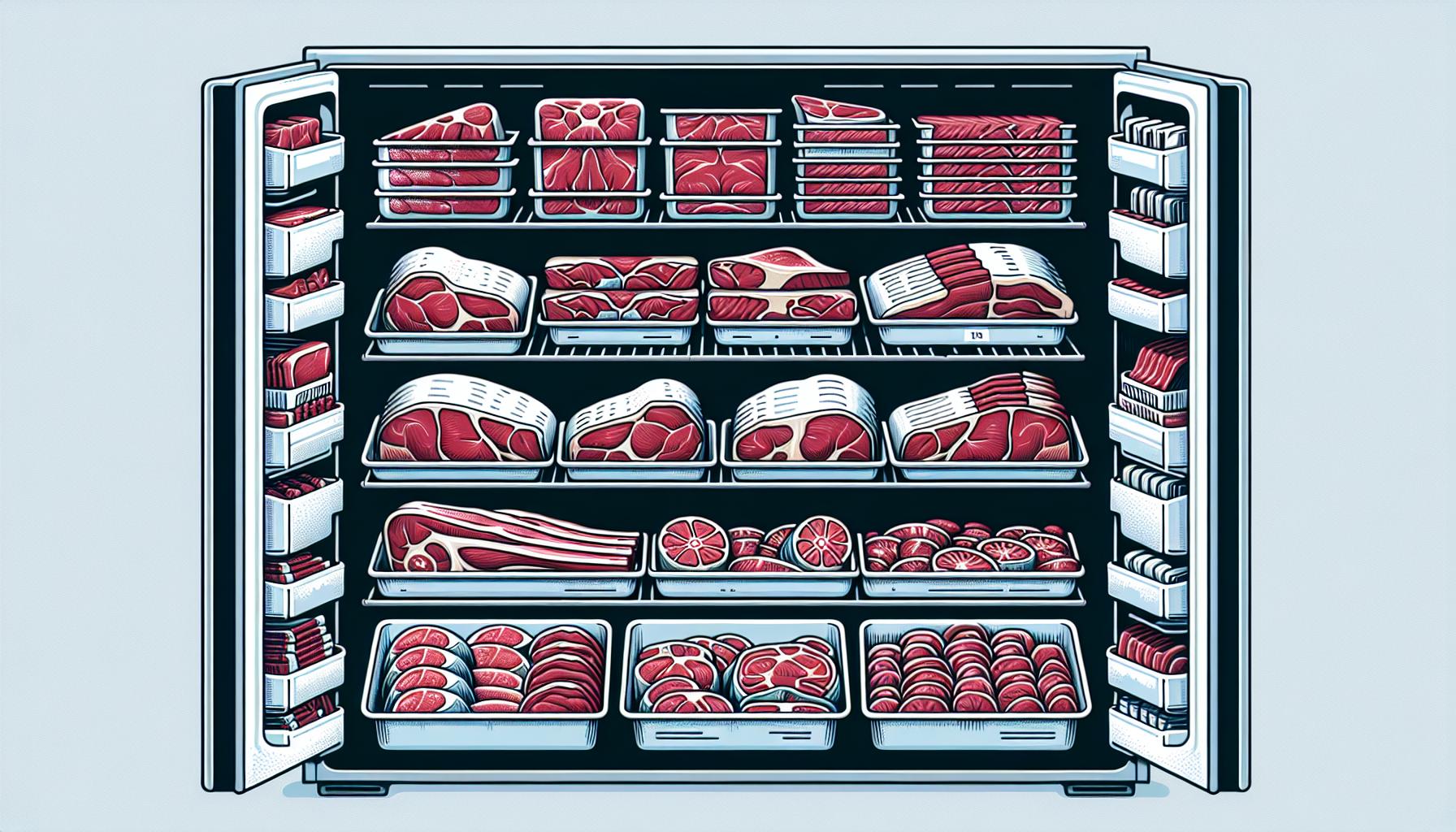Ever found yourself pondering, “Where can I buy half a cow near me?” You’re not alone. In an era where sustainable living and farm-to-table dining are more than just buzzwords, many are turning to buying meat in bulk directly from farms. And it’s not as daunting as it might sound.
Understanding the Concept of Buying Half a Cow
Purchasing half a cow isn’t necessarily a display of an intimidating carnivorous appetite. Instead, it’s a commitment to sustainable living, supporting local farmers, and knowing exactly where your food originates. When you choose to buy half a cow, you’re essentially opting for ownership in a specific portion of a bovine. Now, how does this process work?
Once you’ve located a farm near you that offers half-cow purchasing, which the later sections of this article will guide you through, the farmer then raises the cow to the desired weight. While the cow grows, it enjoys a quality life, often grazing freely in an open pasture, as supported by the American Grass-fed Association.
Upon reaching the optimal weight – usually between 1,000 to 1,200 pounds according to the Oklahoma State University Extension – it’s then processed for a customer who’s previously paid for it. Here’s where the “half” part comes in. Rather than getting an entire cow’s worth of meat, the butcher divides the yield between two customers. These halves consist of a variety of meats, ranging from prime cuts like filet mignon and ribeye to ground beef and roasts.
Advantages of this practice abound. For instance, the quality of the meat. As mentioned by Eatwild’s Pasture to Plate guide, the meat from a cow raised in a pasture is reported to have a better nutritional profile, including higher amounts of Omega-3 fats and vitamins. Additionally, you enjoy cost savings in the long run as buying in bulk often brings down the per-pound cost compared to purchasing individual cuts at a supermarket.
Moreover, when you choose to buy half a cow, you’re making an investment. Not only in your health and the well-being of the local economy, but also in the pursuit of a more sustainable lifestyle where you know exactly what you’re putting on your plate.
In essence, buying half a cow is partaking in a more responsible, health-conscious, and financially-savvy food procurement method that supports local farmers and sustainable agriculture. Go ahead, read on to figure out how to connect with a local farmer and make your own half-cow purchase.
The Process of Buying Half a Cow

In taking the first step towards buying half a cow, it’s crucial to find a local farm that meets your requirements. Look for farms that raise their cattle ethically, not using hormones or antibiotics. A simple Google search of “half a cow near me” often yields fruitful results.
Contacting the farmer directly is the second key step. Discuss with them the breed of cow, the cut options, and pick-up or delivery arrangements. Bear in mind, direct communication enhances transparency and builds trust.
Thirdly, place your order as early as possible. The demand for half cows has risen recently due to the sustainability benefits I touched on in the previous section. So, placing an early order ensures you’re on the waitlist.
Consequently, be prepared for a wait. Your half cow isn’t procured from a warehouse; it’s raised on a farm to get to the desired weight and health. So, your order might take months to be ready.
Once your half cow is ready, butchering happens next. It’s important here to be specific about the cuts of meat you want. The butcher can cut the cow into steaks, roasts, ground beef, and other specifications, depending on your preference.
Finally, pick up your order, or have it delivered if the farm offers this service. At this point, ensure you have enough freezer space. Remember, half a cow can yield around 200 to 250 pounds of beef!
How to Find Half a Cow Near Me

Exploring the realm of beef purchasing options, one might ask, “How do I find half a cow near me?” As we have touched upon the idea of bulk buying from farms, let’s delve into how to find local sources.
First off, I’d recommend utilizing websites that connect consumers to local farmers. Websites such as “Eatwild’s Directory of Farms” and “Local Harvest” encompass a broad range of farmers who raise their cattle using ethical and sustainable practices. Let these sites serve as your starting point. Inputting your location in their search bars often reveals nearby farms that may have half a cow available for purchase.
Networking in farmer markets also can lead you to meat providers. Most vendors at these markets either raise their cattle or know someone who does. Establish connections, ask pertinent questions, and you may find a farmer who is a perfect fit for your meaty needs.
Furthermore, join online forums or communities centered around sustainable living, farm-to-table dining, and similar interests. More often than not, fellow community members share their experiences, recommendations, and sometimes even sell half a cow. Engaging in these communities offers an additional avenue to locate your half cow.
Registering in a community-supported agriculture (CSA) program also benefits you. Many CSAs have options for half or quarter cow shares in their programs. Supported by a network of consumers, these programs facilitate direct relationships with local farmers and let you enjoy fresh, locally sourced beef.
Lastly, eating establishments focused on “farm-to-table” concepts often build relationships with local farmers to source their beef. It wouldn’t hurt to ask the restaurant staff about their sources – inquiring minds can indeed find great leads!
The Benefits of Buying Half a Cow

Investing in half a cow has undeniable benefits up its sleeve. Let’s delve into the primary advantages of beef bulk buying.
- Boosts High-Quality Nutrition: Purchasing half a cow grants you access to nutrient-dense, pasture-raised beef. Unlike store-bought alternatives, this beef, sourced directly from farms, teems with essential vitamins, minerals, and Omega-3 fatty acids. It helps upgrade your diet with naturally enriched sources of protein that taste excellent.
- Economical: In the long run, bulk buying reduces the per-pound cost of beef. Although the upfront expense may appear daunting, considering the yield in terms of meals (about 300 servings to be precise), you’ll find you’re saving bucks.
- Transparent Source: Purchasing half a cow allows for traceability of your food supply. You know where your meat is coming from, how the cattle were raised, and what they were fed. This transparency promotes health and ethical eating choices.
- Sustainability: Buying half a cow supports ecological balance. Grass-fed cattle have a lower carbon footprint compared to conventionally raised ones. They foster biodiversity in pastures and assist in soil carbon sequestration, advocating for a healthier planet.
- Support Local Economy: By purchasing meat directly from farms or area ranchers, you’re injecting money straight into your local agriculture. It creates a win-win situation, fueling the community’s economy and, in turn, securing good quality meat for your family.
- Variety of Cuts: Buying half a cow furnishes your kitchen with a variety of cuts, not just premium steaks. It’s an opportunity to experiment with different recipes and experience diverse textures and flavors.
- Inventory Control: With a freezer stocked with local beef, you can plan meals better, avoiding unnecessary trips to the grocery store. It benefits not just your schedule management but also reduces impulsive, unhealthy eating habits.
In essence, buying half a cow affords numerous benefits – from improved health and diversified diet to economical and ethical choices. It’s worth considering in your pursuit of quality, trustable meat sources near you.
Preparing for Your Half Cow Purchase

Taking the time to prepare for your half cow purchase plays a crucial role in the process. Conducting proper planning ensures you get the most out of your investment, strengthens transparency, and promotes sustainability.
First and foremost, familiarize yourself with the different beef cuts and their uses. Half a cow includes many diverse cuts such as ribeye steak, ground beef, and chuck roast. Understanding these cuts, their uses in cooking, and what proportion of the half cow they make up aids in better meal planning and ensures you know what you’re getting for your investment.
Next, ensure there’s adequate freezer space. Remember, half a cow can yield approximately 200-250 pounds of beef; this equates to requiring about 10 cubic feet of freezer space. Locate a suitable freezer if you don’t already have one; this might require buying a new freezer or arranging additional space in an existing unit.
Budgeting correctly is also significant. While buying half a cow might seem pricey upfront, remember you’re purchasing numerous high-quality cuts of meat that can ultimately save money in the long term. Ensure to account for the costs, including the price of the cow, slaughter, butcher, and packaging fees. These costs are often bundled as a ‘per pound’ price for easier budgeting.
Create a relationship with your farmer. This not only ensures you know where your food is coming from but also allows for open communication and can often allow for specific cut and wrap preferences. Learning about the farm, its practices, and ethical standards can also provide peace of mind about your food’s quality and origin.
Finally, timing is key. Purchasing half a cow isn’t generally a quick process; it requires some time. Knowing when cows are going to the butcher and coordinating the pick-up and delivery or installation into the freezer ensure this process goes smoothly.
Follow these steps, and you’ll be well-prepared for your purchase, knowing precisely what you’re getting, where it’s coming from, and how much it’ll cost. A well-prepared consumer is a satisfied one.
Conclusion
So, you’ve got the scoop on how to buy half a cow near me. It’s not just about getting meat in bulk but also about supporting local farmers and sustainable living. Remember, it’s essential to plan ahead. Know your beef cuts, ensure you’ve got the freezer space, and budget wisely. Building a relationship with your farmer can also make all the difference. By doing so, you’re not just buying beef, but you’re also investing in your health and your community. So, why wait? Start your journey towards sustainable food sourcing today. After all, it’s more than just a purchase – it’s a lifestyle choice.
Frequently Asked Questions
Q1: Why should we buy meat, specifically half a cow, directly from farms?
Buying meat directly from farms, particularly half a cow, offers numerous benefits. It promotes health as beef from ethical farms is typically grass-fed and free from antibiotics. It supports the local economy by providing income directly to the farmers and encourages sustainable living.
Q2: How can I find an ethical farm for purchasing meat?
You can locate ethical farms through local listings, community markets, farmer networks, or agritourism directories. It’s essential to research a farm’s practices before making your purchase to ensure their values align with yours.
Q3: What kind of preparations are needed before purchasing half a cow?
Proper planning includes understanding various beef cuts, ensuring your freezer has adequate space for storing the beef, budgeting for upfront and ongoing costs, establishing a relationship with the farmer, and timing your purchase.
Q4: Why is timing important in purchasing half a cow?
Timing is important because purchasing a half cow is a considerable investment. It’s best suited to be done when your finances are in order, your freezer space is prepared, and the farmer has available stock. It also syncs with the butchering schedule, which usually occurs in the fall or spring.
Q5: How does buying meat in bulk promote sustainability?
Buying meat in bulk, especially directly from the farmer, encourages environmentally friendly farming practices. It reduces transportation and packaging waste and supports the maintenance of open spaces and biodiversity on small farms.
